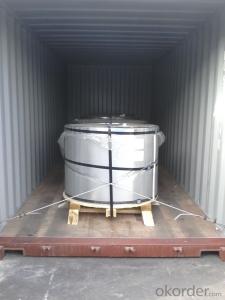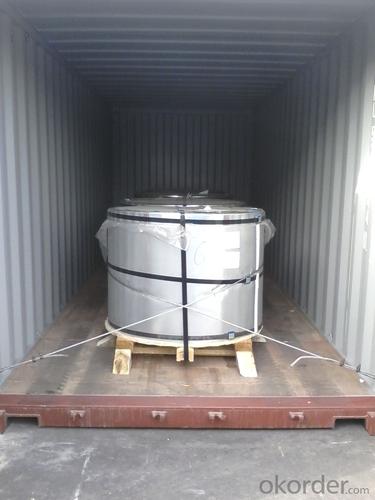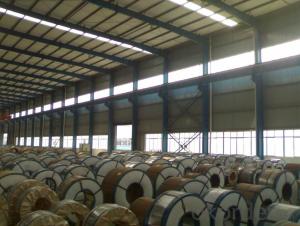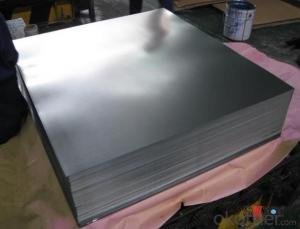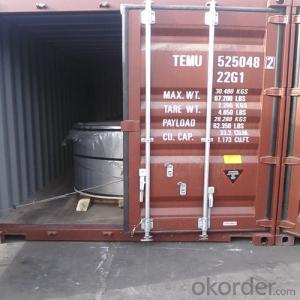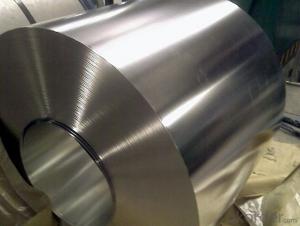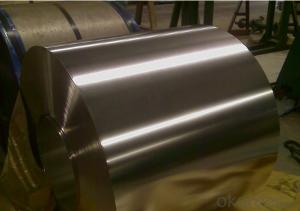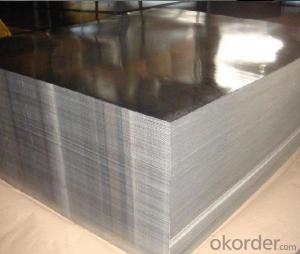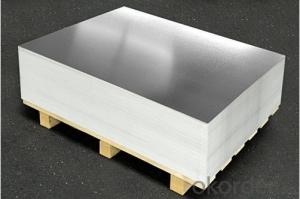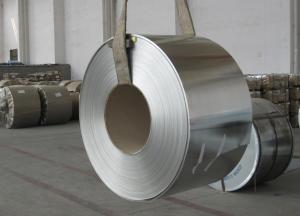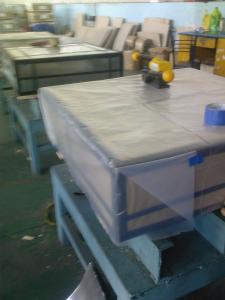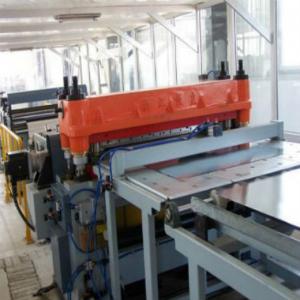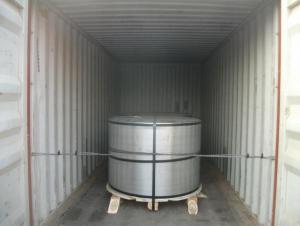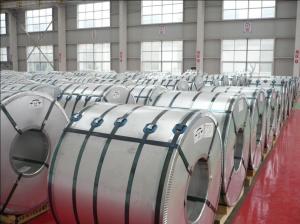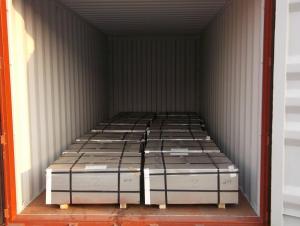Electrolytic Tinplate Sheets and Coils of Food Package Use
- Loading Port:
- Qingdao
- Payment Terms:
- TT OR LC
- Min Order Qty:
- 25 m.t.
- Supply Capability:
- 30000 m.t./month
OKorder Service Pledge
OKorder Financial Service
You Might Also Like
1.Structure of Electrolytic Tinplate Sheets and Coils of Food Package Use Description
Electrolytic Tinplate is a thin steel sheet coated by tin. It has an extremely beautiful metallic luster as well as excellent properties in corrosion resistance, solder ability, and weld ability.
2.Main Features of the Electrolytic Tinplate Sheets and Coils of Food Package Use
Electrolytic Tinplate undoubtedly enjoys the pride of place as a packaging medium especially for food. It owes its unique position to its "nine layer sandwich structure", each of which contributes to its eminence as a packing material. The steel base of electrolytic tinplate provides the necessary strength and formability for can fabrication. The tin-iron alloy layer provides the bond between the steel and free tin layer. The free tin layer is not only responsible for the attractive bright finish and ease of solderability but is also non-toxic- a factor of vital importance in food packaging!
Tinplate is also widely used for making all types of containers such as food cans, beverage cans, and artistic cans, tea cans, painting cans, chemical package cans and dry food package cans, metal printing etc. Its applications are not limited to containers; recently, electrolytic tinplate has also been used for making electrical machinery parts and many other products.
3.Electrolytic Tinplate Sheets and Coils of Food Package Use Images
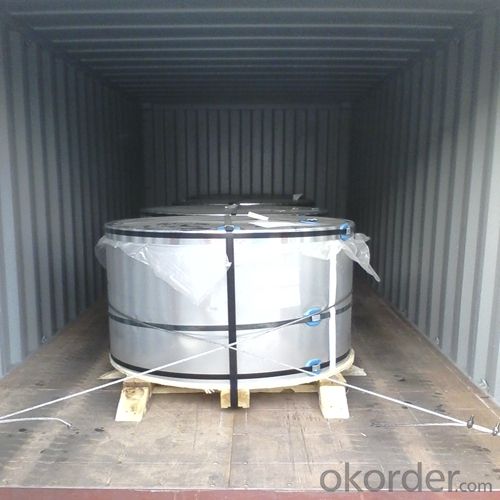

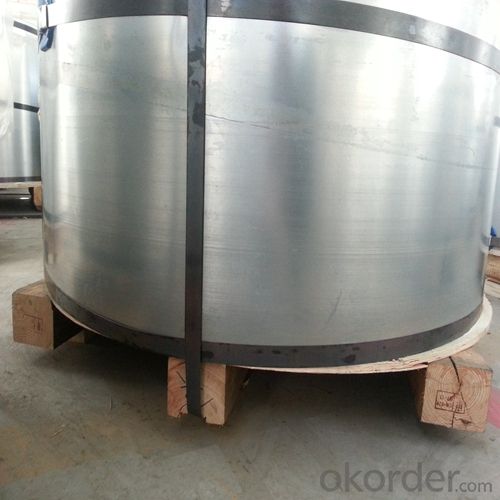
4.Electrolytic Tinplate Sheets and Coils of Food Package Use Specification
Standard:JIS G3303
Material: MR
Thickness:0.35mm
Width: 750
Temper: T3
Annealing: BA
Coil Inner Diameter: 508mm
Weight: 7 tons/coil
Passivation:311
Oil: DOS
Surface: Finish,bright,
5.FAQ of Electrolytic Tinplate Sheets and Coils of Food Package Use
1. What is the delivery time for your prime quality tinplate?
Usually 35 days after order confirmation.
2. What is your Minimum Order Quantity?
Usually MOQ is 50tons for one single size, for trial order, it can be 25 tons.
3. What is the payment term?
The most common we use is L/C at sight or TT. We can also try use other terms.
- Q: How does tinplate handle exposure to pressure and impact?
- Tinplate is known for its excellent strength and durability, making it capable of handling exposure to both pressure and impact effectively. It can withstand moderate levels of pressure without deformation or damage, and its rigid structure helps to absorb and distribute impact forces, minimizing the risk of denting or cracking. Overall, tinplate's resilience and robustness make it a reliable choice for applications where exposure to pressure and impact is expected.
- Q: What are the main applications of tinplate in the marine industry?
- Tinplate is commonly used in the marine industry for various applications including the production of cans and containers for storing food, beverages, and other supplies on ships. It is also utilized for manufacturing components such as panels, fittings, and structural parts due to its corrosion resistance and durability in marine environments. Additionally, tinplate is employed in the construction of ship hulls, bulkheads, and decks, providing protection against rust and enhancing the longevity of marine vessels.
- Q: Can tinplate packaging be used for promotional items?
- Yes, tinplate packaging can definitely be used for promotional items. Tinplate packaging is a versatile and customizable option that can be designed to display brand logos, messages, and captivating visuals. It provides a durable and attractive packaging solution that can enhance the perception of the promotional item and leave a lasting impression on recipients.
- Q: Can tinplate be used for packaging baby food and formula?
- Yes, tinplate can be used for packaging baby food and formula. Tinplate is a type of steel coated with a thin layer of tin, which provides a protective barrier against moisture, odors, and contaminants. It is considered a safe and suitable material for packaging sensitive products like baby food and formula, as it helps to preserve the quality and freshness of the contents while ensuring the safety and health of infants.
- Q: Can tinplate be used for promotional items?
- Yes, tinplate can be used for promotional items. Its versatility, durability, and ability to be customized make it a suitable material for creating various promotional products such as tin cans, tin boxes, tin signs, and tin trays. Tinplate can be printed, embossed, or lithographed with logos, graphics, or promotional messages, making it an attractive choice for promotional merchandise.
- Q: Can tinplate be used for industrial containers?
- Yes, tinplate can be used for industrial containers. Tinplate is a type of steel coated with a thin layer of tin, which provides excellent corrosion resistance and is commonly used in the manufacturing of cans and containers for various industrial applications.
- Q: Can tinplate packaging be used for non-food items?
- Yes, tinplate packaging can be used for non-food items as well. It is a versatile material that offers durability and protection, making it suitable for packaging various non-food products such as cosmetics, pharmaceuticals, and household goods. Tinplate packaging helps ensure product integrity and enhances the overall appeal while providing a sustainable and recyclable option.
- Q: What is the process for printing on tinplate?
- The process for printing on tinplate involves several steps. First, the tinplate is cleaned and coated with a thin layer of primer to ensure proper adhesion of the ink. Then, the design or artwork is engraved onto a printing plate, typically made of a flexible material like rubber or plastic. This plate is then loaded onto a printing press. The tinplate is fed into the press, and the printing plate transfers the ink onto the tinplate in the desired design. The tinplate is then dried or cured to set the ink. Finally, the printed tinplate can be further processed or converted into various products like cans or packaging materials.
- Q: How does tinplate affect the cost of packaging?
- Tinplate can affect the cost of packaging by increasing it due to the higher price of tin compared to other materials. However, it also offers several advantages such as durability, extended shelf life, and enhanced product protection, which can justify the higher cost for certain applications.
- Q: What are the typical tooling costs for tinplate production?
- The typical tooling costs for tinplate production can vary depending on factors such as the complexity of the design, size of the production run, and specific requirements. However, on average, tooling costs for tinplate production can range from a few thousand dollars to tens of thousands of dollars.
Send your message to us
Electrolytic Tinplate Sheets and Coils of Food Package Use
- Loading Port:
- Qingdao
- Payment Terms:
- TT OR LC
- Min Order Qty:
- 25 m.t.
- Supply Capability:
- 30000 m.t./month
OKorder Service Pledge
OKorder Financial Service
Similar products
Hot products
Hot Searches
Related keywords
